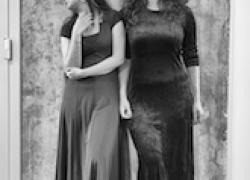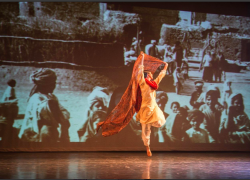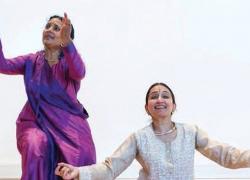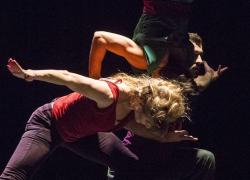Music & Light: A Concert of Indian Classical Music,
Music & Light: A Concert of Indian Classical Music,
Featuring Ustād Dharambir Singh (Sitar)
Roopa Panesar (Sitar)
Shahbaz Hussain (Tabla)
Leicester Guildhall,
4 November 2023
Reviewed by Richard Wrigley
A concert in which Dharambir Singh plays together with Roopa Panesar and Shahbaz Hussein is always a special occasion. On a rainy evening in Leicester, presented as part of celebrations of Diwali, in the historic setting of the Guildhall, the occasion took on not one but several extra layers of cultural meaning.
As explained by Atul Patel, Treasurer of the Sitar Music Society (amongst many other things), in his generous introduction, the Guildhall has been a performance venue since the 16th century (future concerts are promised, including in the re-opened cathedral next door). He deftly interwove the fact that William Shakespeare may well have performed there;, and a chronological parallel of Elizabeth I (1533-1603) and Akbar (1542-1605), and their respective patronage of and enthusiasm for the arts. In Akbar’s case, this enabled the naming of Mian Tansen (d.1589), one of the great fountainheads of Indian classical music (visitors to Gwalior will recall the piquant juxtaposition of the ornate, if not overbearing, tomb of Sufi Mohammed Ghaus, and the relatively modest, plain structure to one side which marks the master musician’s resting place, site of an annual music festival in his honour). Invoking such heritage seemed entirely apt given that Diwali is not only a festival of light, but also one dedicated to the remembering of ancestors. As Atul also reminded the audience, the Guildhall is reputedly a favourite haunt of ghosts. As far as one could tell, none manifested themselves on this evening, perhaps because they were too absorbed by listening to the rich sequence of music presented by the artists. Or else they were gathered invisibly around the glowing coal fire to one side of the hall, since contrary to common belief, even ghosts need to keep out the cold.
Ustad Dharambir Singh generously and admiringly acknowledged that he was joined on stage by two stars, no longer rising but endowed with their own bright luminosity – starlight, it seems, being a further aspect of Diwali. (It should also be noted that Shahbaz Hussein was joined on stage by three of his up and coming pupils.) The musicians were seated on a low platform, behind them hundreds of small candle-like lights in honour of Diwali. Above them, a lattice of venerable timbers: like the musical patterns which were developed, an overall structure was made of a sequence of individually crafted elements, each dependent on the whole but also unique.
The programme began with Rāg Chandrakauns: Dharambir asked us to imagine that we were hearing this at its traditional midnight timing. Between this and Rāg Malkauns, we were treated to an interlude, in the form of Rāg ChandraMāl, with a bluesy feel, and a loping rhythmic swing, as if the spirit of Ry Cooder had entered the room. As one would expect of a relationship which has developed over more than thirty years, the two sitarists exchanged phrases and musical gestures in a way which combined a perfectly harmonious reciprocity, yet with the unmistakable sense of two different, individual voices. Shahbaz Hussein’s playing was as always an integral part of this musical envelope, ebbing and flowing as he successively supported and amplified the rhythms and phrasing of the other instruments, and of course regularly coming to the fore with extended solos.
After the interval, a sense of informality was introduced, the musicians entering and, rather than waiting for silence and having regained the audience’s full attention before embarking on their musical presentation, starting to play while the audience was largely still out of their seats. We were treated to a series of dhuns, or folk tunes, no less intensely felt for all their lyrical brevity: ‘Chaiti Dhun’ (a seasonal melody from Uttar Pradesh, well-known from the classic 1967 LP, Duets of Vilayat Khan and Bismillah Khan), a Benarsi dhun, an Afghani melody ‘Anār Anār’, a finally the bhajan ‘Raghupati Ragaav’. The evening concluded with what Dharambir wittily and topically referred to as fireworks, a rendition of Rāg Pilu, which progressed towards a plateau of mesmerising prestissimo playing.
(With thanks to Ustad Dharambir Singh for providing further details of the programme.)
Richard Wrigley has been listening to Indian Classical music since hearing Ustad Imrat Khan and Pandit Kumar Bose play Raga Darbari in the Holywell Music Room, Oxford, in 1978.



















